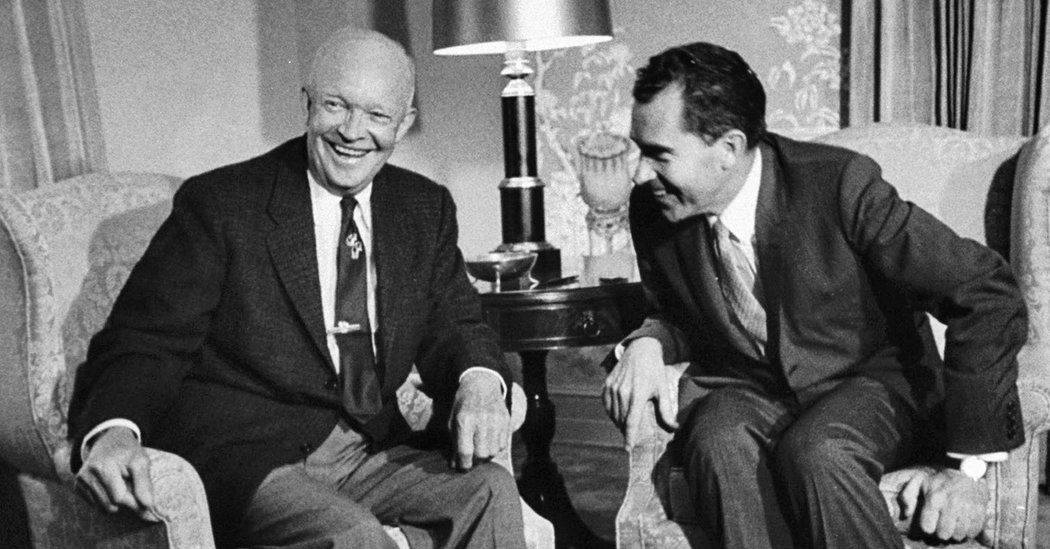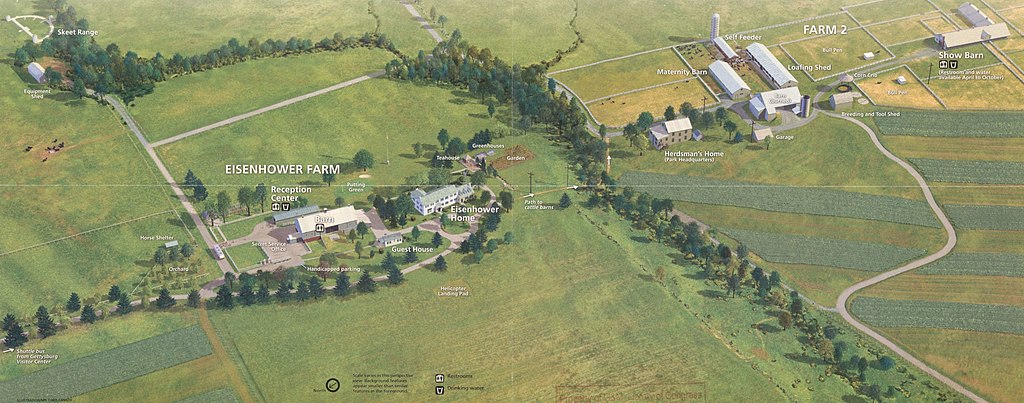Though no scandals touched Eisenhower personally, the media showed occasional interest in the number of gifts he received.
-
February/March 2021
Volume66Issue2
Because of the heavy barrage of criticism the Republicans had directed at the scandals in the Truman administration during the 1952 campaign, both the executive and legislative branches were particularly sensitive to the issue of corruption in government for the duration of Dwight D. Eisenhower’s tenure. At an early meeting in February, 1953, the president instructed cabinet members to be alert to conditions that might breed charges of favoritism or conflict of interest, and to be quick about calling on the Department of Justice to investigate dubious situations.
The president’s emphatic action was prompted, in part, by clear signals from Congress that it intended to maintain the vigorous oversight role that had helped uncover the “mess” of the preceding regime. After the Democrats regained control of the legislature in 1955, the president and his aides would be under steady pressure about corruption, and before the end of Eisenhower’s term allegations about the improper use of public office had reached deep into the White House itself.
Nixon's Slush Fund
Charges of official misconduct were leveled at the Eisenhower entourage even before the November, 1952, election. On September 18 the New York Post claimed that Republican vice-presidential candidate Richard M. Nixon had received some $16,000 to $17,000 from a group of wealthy California businessmen since his election to the Senate in 1950. Under the headline “Secret Rich Men’s Trust Fund Keeps Nixon in Style Far Beyond His Salary,” the Post announced the “existence of a ‘millionaires club’ devoted exclusively to the financial comfort of Senator Nixon.”
Given the stress that the Eisenhower campaign had placed on condemning corruption in Truman’s government, the allegations about Nixon were explosive, but few on Eisenhower’s staff immediately grasped the danger. Not until Nixon ran into hostile demonstrators at his rallies, and two influential newspapers supporting the Republican ticket, the New York Herald Tribune and the Washington Post, called for Nixon’s withdrawal from the race, did Eisenhower and his advisers realize that some action was necessary.

The initial strategy was to play for time. Public reaction had to be gauged and all options considered before any decision could be reached. It would be difficult, the Eisenhower staff concluded, to retain Nixon when there were many more Republican demands for his ouster, but dismissing him also had its liabilities. Eisenhower reportedly told a top aide, "If Nixon has to go, we cannot win.” With the various wings of the Republican party split over what should be done, Eisenhower delayed making up his mind.
A television address by Nixon was finally agreed upon as the best way out of the impasse. Eisenhower would have additional time to determine the popular mood. In his speech on the night of September 23, Nixon defended the fund by arguing that it had been used solely to defray political expenses which he said could not be charged to the federal government, and gave a detailed accounting of his finances in an effort to prove that none of the money had ended up in his pocket. After declaring that he was no "quitter" and that he was dedicated to Eisenhower, he asked the American people to decide his future by wiring or writing the Republican National Committee.
The massive outpouring of national sympathy for Nixon’s plight shaped Eisenhower’s response. Appearing before a crowd shouting, “We like Dick,” a few minutes after the speech was over, Eisenhower praised his running mate as a courageous and honest man who, in a showdown fight, would be more useful than a “whole boxcar of pussy-footers.” Although he announced that no final decision on Nixon's fate could be made until he talked to him in person, the flood of telegrams to the National Committee settled the matter before the interview could take place. When Eisenhower met Nixon at the Wheeling airport on the night of September 24, he put his arm around him and said, “You're my boy."
The President’s Finances
With a single fleeting exception, no touch of scandal ever attached itself to Eisenhower’s personal finances, although the media showed occasional interest in the unusually large number of gifts the President received. In December, 1955, Newsweek estimated that in the first three years of his administration Eisenhower had accepted more than $40,000 worth of gifts, most of them animal stock and equipment for his Gettysburg farm.
The same month U.S. News & World Report, in an article prompted by the presentation of a tractor and cultivator to Eisenhower by three farm cooperatives, observed that the White House had no “rigid policy” on gifts; there was no limit on the value of the objects the President might accept—no cash, however, would be taken.
Asked to explain how Eisenhower could justify his actions in view of the strict standards on gifts he had set for other federal officials, a White House aide declared, “The office of the President is too big to be influenced by any gift.” The gifts did not become an important political issue.
The President’s only public comments on his attitude concerning gifts came in the summer of 1957 after the Cowles newspapers ran a series of articles on his personal finances. Queried at his July 31 news conference about the great many gifts he had received, Eisenhower noted that since he was an elected official, “the conflict of interest law does not apply to me.” This remark led Senator Wayne Morse (D–Ore.) to declare on August 2 that the Eisenhower administration was following a “shocking code of political immorality."

The Oregon senator’s blast generated a question at Eisenhower’s August 7 news session on what philosophy guided the president when people offered him gifts. Most presents, Eisenhower replied, "come to me from large organizations, voluntary organizations, and I make this stipulation: anything that is given me is right out on the record, and it is given for a particular purpose."
With these remarks, the issue of Eisenhower’s finances disappeared from public view, except for a few stories by the syndicated columnist Drew Pearson. In a May, 1960, article, Pearson estimated that the President had received $300,000 worth of machinery, livestock, and horticultural goods for his Gettysburg farm, but perhaps Pearson’s most interesting revelation occurred after Eisenhower left the White House. Pearson reported in the winter of 1961 that during his presidency Eisenhower had leased the farm to three wealthy oilmen who apparently made no serious effort to turn a profit on their investment. Indeed, one of the lessees claimed a sizable tax deduction each year for the losses incurred in running the farm.
Another allegation of Pearson’s, this one in 1958, seemed for a time to be more damaging to Eisenhower. On the day that Adams went before the Legislative Oversight Subcommittee to explain his relations with Goldfine, the Pearson column carried a story, which the Washington Post ran under an eight-column, front-page headline, that Eisenhower had accepted a vicuna coat from the New England industrialist.
The president’s press secretary had previously denied rumors of such a gift, but after Pearson made his charges, Hagerty conceded that Eisenhower had received vicuna material from Goldfine and had sent him a “thank you” letter. But, Hagerty went on, the President had not kept the material, giving it instead to a friend, whose name Eisenhower could not recall. Neither the press nor Congress followed up on the disclosure, however, as both were engrossed in unraveling the far more complicated Adams-Goldfine relationship.
What some commentators interpreted as implied criticism of Eisenhower’s attitude toward gifts was delivered by a special committee of the Association of the Bar of the City of New York in February, 1960. Creation of the Association’s Committee on the Federal Conflict of Interest Laws in 1958 was itself a sign that the “mess in Washington” which Eisenhower had promised to clean up in 1952 had not disappeared. Included among the committee’s comprehensive proposals for remedying the situation was the indirect suggestion that perhaps Eisenhower was partly responsible for the continuing problem. Noting that “in all matters [of conflict of interest] within the executive branch, the key figure must be the Chief Executive,” the committee emphasized the role the president could play by the “power of example."
Adapted from an essay which originally appeared in Presidential Misconduct: From George Washington to Today, edited by James M. Banner, Jr. Published by The New Press. Reprinted here with permission.

